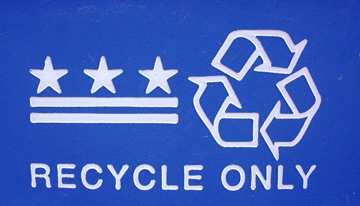They say opposites attract in romance. Is the same true at the workplace? Some believe a team with similarities, a common perspective, and like minds works best. That is far from a fully enlightened view, and do not fall into that trap.
Team Diversity & Human Understanding
 Allow me to define team diversity as a team with diverse thinking preferences and behaviors. Each team needs an idea, concept, mission, or problem to solve. Can that make a difference on its own? Without an analytical mind to determine its efficacy and value, a “doer” to implement, or a social thinker to help “sell” the idea, the idea remains untapped, or worse – fails outright.
Allow me to define team diversity as a team with diverse thinking preferences and behaviors. Each team needs an idea, concept, mission, or problem to solve. Can that make a difference on its own? Without an analytical mind to determine its efficacy and value, a “doer” to implement, or a social thinker to help “sell” the idea, the idea remains untapped, or worse – fails outright.
Frequently, team members from these different preferences rage against these differences. The analytical types may not take social thinkers seriously, likely focus on technical gaps in others, and don’t always respect the importance of people in the solution. Social thinkers may resist analytical thinkers as not sensitive to the people side and themselves struggle to identify optimal solutions. Conceptual thinkers may just have no energy to implement, and “doers” often need direction.
Behaviorally, a team must have a good mix as well. Can you imagine a team with all assertive leaders? They would pull and push and tug at each other for superiority – making control the goal versus the project itself. Or a team with all followers? How would they make decisions? Also, who is the best to present? The one that likes to talk and express, or the one that prefers quiet reflection? In a situation that requires innovation, should that team be comprised of those uncomfortable with change, or those that are more at home with newness?
Realizing this, effective teams value these differences and roles, and leverage them within the project. Rather than devalue differences, team members must embrace them as fundamental to success. This is not to say every effective team must ensure that each preference is represented. Rather, the make-up of the team and leadership approach should be tailored to the specific need with this awareness in mind.
Those that devalue these differences are easily spotted. They’re the ones that gossip, complain, undermine, and have over-exaggerated impressions of self-importance. They’re the ones that think everyone should be like them. They hold team effectiveness back. They stifle cultural growth. They spell the end of team cohesion and effectiveness. Some can change, many cannot. Leaders striving for an effective culture must address these cancers before they spread.
Commensurate with this appreciation for thinking and behavioral preferences, thus, is improved understanding and respect for each individual. Each area of preference represents a unique dimension of intelligence – no better, no worse than the others. Differences are not weaknesses. Once this is understood, these different preferences and abilities can be respected, and then valued. It is then, and only then, that leaders and team members tap into the full potential of the team.
A wonderful by-product of this awareness is respect and appreciation for the individual as a human being. Suddenly, sales executives respect the accounting clerk, and organizations deeply value those without great ideas, but who are stellar at implementation (a very rare, but vital skill – closely linked to success). People reach out and collaborate, and outcomes become more effective.
I once had the misfortune of working for a boss that was thrown into a situation that was not natural to him. He self-identified his disdain for human sensitivities, was uncomfortable with communication, overly asserted his will, and refused to be flexible to different points of view. It was just the way he was wired – reflective of his thinking and behavioral preferences. Can you imagine the impact his style had on organizational culture, directional clarity, team buy-in, success, and team inspiration? Yet, properly used, these are not weaknesses, just different strengths. An effective leader could realize the value these preferences can offer. Someone with this style could be ideally suited for highly technical work that was positioned as an individual contributor – and odds are, he’d thrive in a role that did not require leadership or interpersonal skill.
I would then offer that a culture leveraging diversity and respecting individual human differences sets itself up for more success. The reach and application of this premise extends beyond building work teams, to motivating high performers, to employee fulfillment, to understanding how different clients define success, to effectively selling to different audiences, to implementation success, to discovering innovations that actually work, and beyond.
With all this at stake, lead the way. Your team and your business await….


